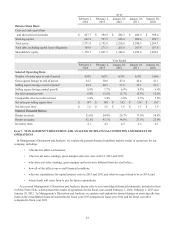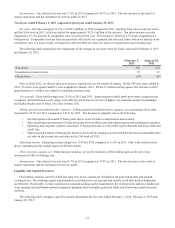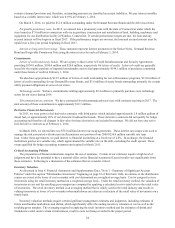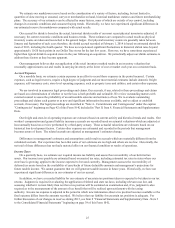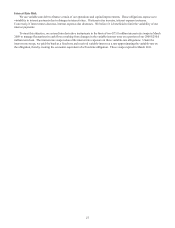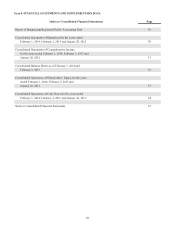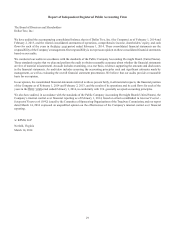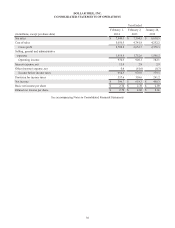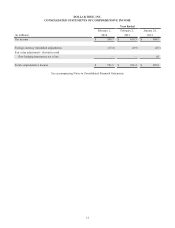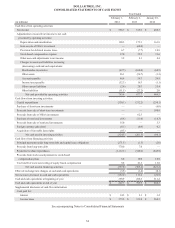Dollar Tree 2013 Annual Report Download - page 43
Download and view the complete annual report
Please find page 43 of the 2013 Dollar Tree annual report below. You can navigate through the pages in the report by either clicking on the pages listed below, or by using the keyword search tool below to find specific information within the annual report.27
Interest Rate Risk
We use variable-rate debt to finance certain of our operations and capital improvements. These obligations expose us to
variability in interest payments due to changes in interest rates. If interest rates increase, interest expense increases.
Conversely, if interest rates decrease, interest expense also decreases. We believe it is beneficial to limit the variability of our
interest payments.
To meet this objective, we entered into derivative instruments in the form of two $75.0 million interest rate swaps in March
2008 to manage fluctuations in cash flows resulting from changes in the variable-interest rates on a portion of our 2008 $250.0
million term loan. The interest rate swaps reduced the interest rate exposure on these variable-rate obligations. Under the
interest rate swaps, we paid the bank at a fixed-rate and received variable-interest at a rate approximating the variable-rate on
the obligation, thereby creating the economic equivalent of a fixed-rate obligation. These swaps expired in March 2011.



